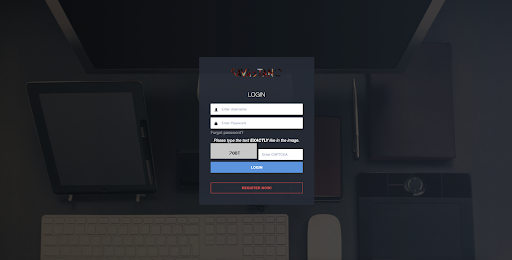Most dark web markets pop up and disappear faster than you can blink. Savastan0 is different. It’s stuck around, gotten bigger, and frankly scared the hell out of a lot of people in cybersecurity.
I first heard about it in 2022 from a guy who worked fraud cases. “You need to check this out,” he said. “It’s not like the others.” He was right. Three years later, it’s become the gold standard for criminal marketplaces, which is terrifying.
In February, they got hacked hard. Really hard. Should have been game over. But here we are in late 2025, and they’re still running strong. That tells you something about how deep this thing goes.
How They Built Their Empire
Getting into Savastan0 was a pain. You can’t just sign up like Netflix. You need invitations from existing members. Not one invitation – multiple ones. I had to bug three different contacts before I could even see their homepage.
The waiting frustrated me at first. Then I realized why they do it. Every member vouches for new people. If someone screws up, it reflects badly on whoever brought them in. Creates a weird kind of honor system among criminals.
This approach worked incredibly well. Users actually care about their reputation because getting kicked out means starting over completely. Vendors maintain quality standards because bad reviews matter. The whole place runs smoother than most legitimate businesses.
The numbers are insane. My sources say they went from maybe 10,000 users in 2022 to over 100,000 by 2024. Monthly transactions hit millions of dollars. Top vendors make more money than most people’s day jobs. It’s become a legitimate criminal ecosystem.
What Makes It Actually Work
Walking through Savastan0 feels wrong. Not because it’s obviously criminal, but because it works so well. Clean interface, organized categories, detailed product descriptions. It looks like Amazon, which makes it scarier.
Every listing tells you exactly what you’re buying. Credit card data includes expiration dates, zip codes, and recent purchase history. Bank login credentials come with current balance information. Fraud guides specify success rates and include step-by-step instructions.
Their escrow system solves the biggest problem in criminal markets: getting ripped off by other criminals. You pay money to the platform, not directly to sellers. Sellers only get paid after you confirm the data works. If there’s a problem, moderators handle disputes.
I watched several disputes get resolved. Average response time was about 30 hours. Most got settled fairly. Customer satisfaction stays above 90 percent, which beats most legitimate customer service operations.
The education section still blows my mind. Video tutorials on credit card fraud. Live workshops on money laundering. One-on-one coaching from experienced criminals. Some of these “instructors” charge $1,000 for private sessions.
This isn’t just selling stolen data anymore. They’re teaching people how to be better criminals. More successful criminals become repeat customers. It’s business development for illegal enterprises.
The Hack That Should Have Killed Them
February 15 started normal. Then my phone exploded with messages. Savastan0 had been completely compromised. Three million user records stolen. Transaction histories exposed. Private messages leaked.
At first, I thought it might be exaggerated. These places get “hacked” all the time, usually just rumors. But within two days, actual stolen data started appearing on other forums. Real usernames, real wallet addresses, real purchase histories.
Someone had gotten deep into their systems. Really deep. The attack looked professional, possibly state-sponsored. Maybe law enforcement, maybe another criminal group. Either way, it was devastating.
The platform went dark immediately. No explanation, no timeline for return. Users panicked. Vendors disappeared. Competitors celebrated. Everyone assumed it was over.
One week later, they came back online. New security measures, encrypted everything, mandatory two-factor authentication. Public statements explained what happened and what they’d fixed. Customer compensation programs offered credits and refunds.
The response impressed cybersecurity experts. Professional crisis management, rapid technical fixes, honest communication. Most legitimate companies handle breaches worse than this criminal operation did.
Law Enforcement Can’t Keep Up
Federal agents I know are frustrated beyond belief with Savastan0. They understand exactly how it operates. They know who the major players are. They can’t do anything about it.
The technical setup is brilliant. Servers in multiple countries with different laws. Hosting changes every few weeks. Communications use military-grade encryption. Payments go through privacy coins that are nearly impossible to trace.
International cooperation moves too slowly. By the time one country approves warrants, operations have moved to three other jurisdictions. Legal frameworks weren’t designed for this kind of global, digital criminal enterprise.
Resource limitations make things worse. Government cybersecurity budgets can’t compete with criminal profits. These platforms reinvest millions into better security, faster servers, improved encryption. Law enforcement struggles to keep up technologically.
One investigator told me they’re fighting 21st-century crime with 20th-century tools. “We get them on one server, they’ve got five backups running in countries we can’t touch,” he said. “It’s like playing whack-a-mole with unlimited moles.”
Community Loyalty Runs Deep
The February hack tested how loyal users really were. Initial panic drove thousands to competitor platforms. Transaction volumes dropped 80 percent. Many vendors stopped posting new products. The ecosystem looked genuinely threatened.
Recovery happened faster than anyone expected. Users trickled back within weeks. Vendors resumed operations gradually. New registrations continued despite security concerns. By summer, activity levels approached normal.
Exit surveys revealed interesting patterns. Most people who left weren’t unhappy with the service. They worried about operational security after the breach. Fear of law enforcement attention drove departures more than platform problems.
Loyalty drivers included relationships with specific vendors, access to educational content, and trust in dispute resolution. Users had built entire criminal operations around platform services. Switching costs exceeded security concerns for active participants.
The compensation program helped retention significantly. Account credits, fee waivers, priority customer support. These tactics worked exactly like legitimate business recovery strategies. Criminal enterprises now compete on customer service quality.
What This Means for Everyone
Savastan0 represents something new in criminal enterprise. Traditional assumptions about disorganized, opportunistic criminals don’t apply anymore. This is systematic, professional, customer-focused criminal business.
The educational component scales expertise exponentially. Instead of learning through mistakes, new criminals get comprehensive training. Success rates improve dramatically. Detection becomes harder when everyone follows best practices.
Community building creates network effects that strengthen the entire ecosystem. Reputation systems encourage quality service. Knowledge sharing accelerates technique development. Business partnerships enable larger operations.
Platform resilience after major disruption shows how adaptable these operations have become. The February breach should have destroyed user confidence permanently. Professional management preserved community loyalty instead.
Looking Ahead
Savastan0 marketplaces has changed how criminal forum operate forever. Competitors copy their business model. New platforms launch with similar standards. The entire dark web economy has professionalized around their example.
This evolution challenges basic cybersecurity assumptions. We’re not dealing with individual hackers or small groups anymore. These are sophisticated businesses with competitive advantages, professional management, and loyal customers.
The February breach proved these platforms aren’t invincible. Recovery demonstrated remarkable resilience though. When criminal enterprises operate like legitimate businesses, traditional disruption strategies become less effective.
My background in cybersecurity research has shown me concerning trends before. Savastan0 represents the most significant shift I’ve witnessed. Criminal enterprise has become about customer service, community building, and professional business practices.
That transformation extends beyond cybersecurity. We’re watching criminal organizations compete on service quality, build customer loyalty, and adapt quickly to pressure. Traditional law enforcement approaches aren’t designed for this reality.
Stopping this evolution requires completely rethinking cybercrime prevention. Technology solutions alone won’t work. Legal frameworks need updates. International cooperation must improve. Resource allocation needs fundamental changes.
The dark web has always challenged law enforcement. Platforms like Savastan0 have made those challenges exponentially harder. Professional criminal enterprise is the new normal, and most people aren’t ready for what comes next.
Underground markets used to be chaotic, unreliable, and short-lived. Savastan0 changed that completely. Now they’re efficient, trustworthy, and sustainable. That shift has implications far beyond cybersecurity that we’re only beginning to understand.





























